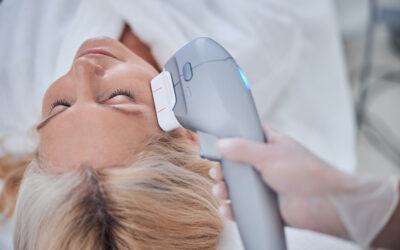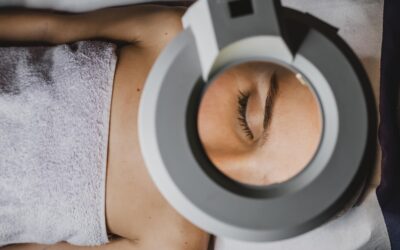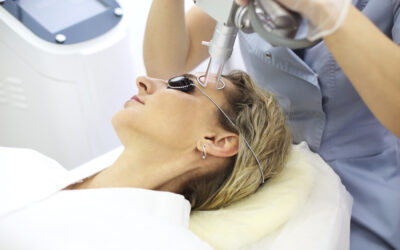If you’re thinking of starting laser hair removal, you want to make sure you get the best possible results from your investment. The secret to success doesn’t just lie in the treatment itself—what you do after each session can also make a difference. That’s why following the right laser hair removal aftercare tips is so important. Here are some essential aftercare steps that will help you achieve smooth, lasting results from your laser hair removal journey.
The 24-Hour No-Sweat Rule
Your technician probably told you to avoid sweating for 24 hours after treatment, but they might not have explained exactly why this is so crucial. When you undergo laser hair removal, the heat from the laser creates tiny pathways in your skin as it targets hair follicles. These microscopic channels are temporary, but for about 24 hours, they leave your skin more vulnerable than usual.
Here’s what many people don’t realize: sweat carries bacteria. Lots of it. If you sweat heavily after treatment, you’re essentially washing bacteria across skin that has these tiny open channels. This can lead to what is called “folliculitis”—inflamed or infected hair follicles that look like small white pimples on all of your pores. Not pretty or fun, but also treatable.
To play it safe, plan your laser sessions for days when you can take it easy. Skip intense workouts, hot yoga classes, saunas, and even long, hot showers that might make you sweat for at least 24 hours after. Your skin will thank you by healing properly.
The Shaving Secret Most People Miss
Many people are surprised to learn that they’ll still need to shave between laser sessions—but only a couple of times. This is actually a good sign because it means the treatment is working. As the laser damages your hair follicles, the hairs will start to shed naturally over the 2-3 weeks following treatment.
What most blogs won’t tell you is that these shedding hairs can sometimes look like they’re growing back. Don’t panic! They’re actually dead hairs without a root, being pushed out by your skin. Gently shaving can help speed up this shedding process without irritating your skin.
A lesser-known tip is to use a fresh razor each time you shave post-treatment. Old razors can harbor bacteria that might irritate your sensitive post-laser skin. Shave in the shower or at the end of a bath to minimize skin irritation.
Exfoliation: Your Secret Weapon for Better Results
Exfoliation is often mentioned in aftercare instructions, but its importance is usually understated. Regular, gentle exfoliation starting about 3-4 days after your treatment does more than just remove dead skin cells—it actively helps prevent ingrown hairs that can interfere with your next laser session.
When dead hairs start shedding after treatment, they can sometimes get trapped under the skin, causing ingrown hairs. These ingrown hairs not only look unsightly but can also reduce the effectiveness of future laser treatments since the laser can’t properly target hairs that aren’t emerging from the follicle.
Here’s a technique few blogs mention: dry brushing. Using a soft, natural-bristle brush on completely dry skin before showering can be even more effective than scrubs or loofahs for preventing ingrown hairs after laser treatment. Move the brush in small, circular motions over the treated areas (once they’re no longer sensitive, of course). This technique helps to physically guide those shedding hairs out of the follicle.
For body areas, a gentle scrub with ingredients like magnesium crystals or beads (not harsh walnut shells) used 2-3 times a week can work wonders.
Sun Protection: More Than Just Avoiding Sunburns
You’ve probably heard that you should avoid sun exposure after laser treatment, but many people don’t understand the full scope of why this matters so much. It’s not just about preventing sunburn on sensitive skin—UV exposure immediately after laser treatment can cause hyperpigmentation (dark spots) that might be permanent.
What’s less commonly known is that even brief sun exposure through car windows or while momentarily walking outside can affect recently treated skin. UVA rays, which cause skin aging and pigmentation issues, can penetrate glass and clouds. You don’t have to intentionally “tan” to experience the negative outcome of sun exposure without sunscreen.
The sweet spot for sun protection is using SPF 30 or higher, ideally a mineral sunscreen so that you don’t need to reapply. Physical sunscreens containing zinc oxide or titanium dioxide are generally better for recently treated skin than chemical sunscreens, which can sometimes cause irritation.
Understanding Perifollicular Edema
Something many clients worry about but is completely normal is perifollicular edema (means swelling around the follicles)—small, raised bumps that look like goosebumps or tiny red welts around hair follicles after treatment. This temporary swelling happens because the laser targets the hair follicle, causing a localized inflammatory response. Don’t panic if you see this! It’s a good sign that the treatment is working effectively and just means that your body has higher histamine responses. These bumps typically disappear within a few hours but might last up to 48 hours for people with sensitive skin.
For quick relief, a daytime antihistamine (like Reactine, Claritin or Zyrtec) can help reduce the reaction, or you can apply a thin layer of over-the-counter 0.5% hydrocortisone cream to soothe the area. If you find you’re particularly reactive with high histamine responses, your technician might recommend taking a non-drowsy antihistamine about an hour before your next appointment to minimize these reactions from the start. This simple preparation can make your treatment experience much easier!
Hydration: Inside and Out
While many aftercare guides mention moisturizing, they rarely emphasize the importance of internal hydration. Drinking plenty of water after your laser treatment can help your skin recover faster. The laser process creates heat in your skin, and proper hydration helps your body efficiently carry away damaged cells and reduce inflammation.
When it comes to topical hydration, aloe vera gel straight from the plant is remarkably effective at soothing treated skin. If you don’t have access to a plant, look for products with high concentrations of pure aloe vera and minimal additives. Store your aloe vera gel in the refrigerator for an extra cooling effect when applied.
The Patience Principle
Perhaps the most overlooked aspect of laser hair removal aftercare is mental: understanding that results take time and patience. Each treatment only affects hairs in the active growth phase, which is why you need multiple sessions several weeks apart. The laser can only remove the hairs you have at the appointment, it cannot tell your body what to do in the future.
Between treatments, you might notice uneven results or patches where hair seems to be growing normally. This is completely normal and doesn’t mean the treatment isn’t working. Different areas of your body have different percentages of hairs in the growth phase at any given time.
Keeping a photo journal of your progress can help you see the gradual improvement that might not be obvious day to day. Take photos before each treatment in consistent lighting to track your results objectively.
In Conclusion
Proper aftercare is the unsung hero of successful laser hair removal. By understanding why these aftercare steps matter—not just following them blindly—you can maximize your results and minimize any side effects.




